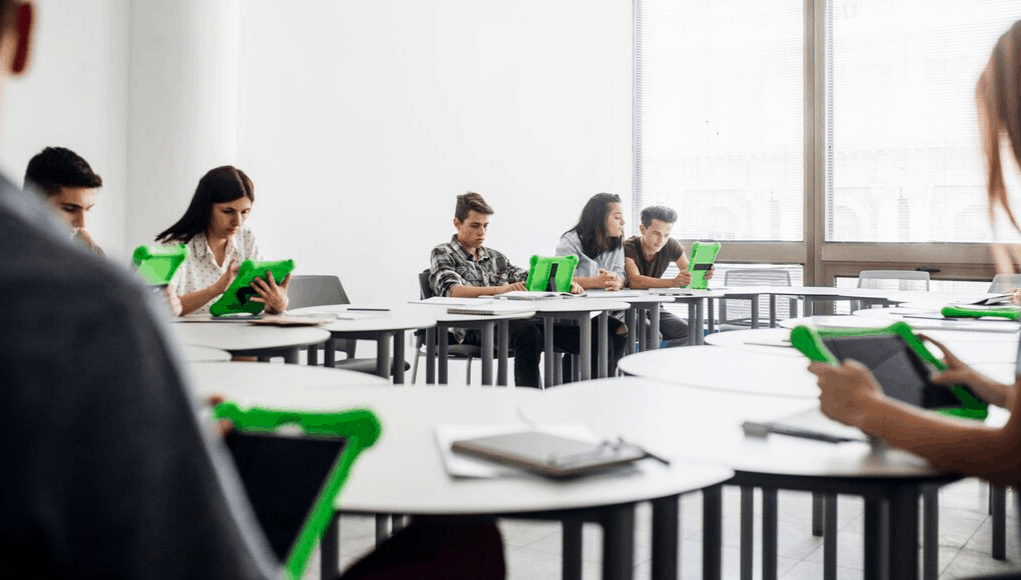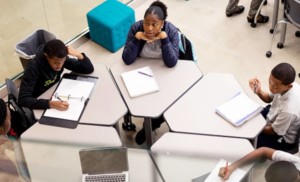An Opportunity to Disrupt Education for the Better: Lessons From Starting a School in a Pandemic

By: Tom Woelper
There’s no doubt that American education is in a state of disruption, with most established schools laser-focused on the immediate and pressing challenges around reopening and educating their students in the short-term. These disruptive forces also present opportunities.
As the Founding Head of School at the New England Innovation Academy—a new school that was set in motion long before COVID—my experience of adapting education to the pandemic has been quite different. NEIA, which opens its doors to students in Fall 2021, is in the midst of a planning year for our curriculum, staffing needs, and the renovation of our campus. As a startup school, we were already thinking outside the box in terms of diverging from traditional schools. We are fortunate to avoid the pressures that so many schools face opening this fall, and this has allowed us to rethink how we can provide an education that meets students’ needs in a changing world. This was the initial premise of NEIA’s founders, and it holds even more true today.
Disruption is painful, there’s no doubt about that—and the disruption we face as educators today is no doubt unwelcome. However, COVID offers an opportunity to thoroughly reconsider our educational model. As we’ve begun thinking about what kind of education we’ll deliver post-pandemic, four key areas of change stand out to us. These not only lay the framework for a new school, but provide opportunities for changes to our existing model of education in the U.S.
Make Blended Learning Integral to the Curriculum
Admirably, when faced with the challenge of moving to distance learning in mere weeks, schools built the proverbial plane while flying it and continue to make strides in distance learning, knowing that they may need to pivot at any moment if another shutdown occurs.
Distance learning during COVID-19 made one thing almost universally clear: the current paradigm of education does not translate well into a digital platform or result in meaningful, relevant, or enduring learning at a level we need it to, for the sake of our students.
It’s a reality that has turned many students, parents, and educators off to distance learning. But in reality, blended learning can be a productive and meaningful way of educating students; it’s a strategy that we had planned prior to the pandemic, and the prospect of turning to distance learning at any moment has solidified that decision.
In a global, interconnected society, blended learning models benefit students beyond catastrophic crises. They provide flexibility to meet students’ needs: allowing students to travel and study internationally while still participating in class, or elite athletes to train and compete while away from school for extended periods. Most schools do not allow for—or angst about—this. But the pandemic demands an effective, successful distance learning option—and with that in place, schools like NEIA can enthusiastically support students having learning experiences both on and away from campus.
Blended learning also allows schools to meet students where they thrive—and that is just what is happening for many students for whom distance learning is a good fit. By robustly developing and offering in-person, blended, and online learning programs, we put more tools into our teachers’ instructional tool belt while providing maximum flexibility.
Emphasize Empathy
The current public health and economic crisis, along with the racial and social justice issues at the forefront of national conversation, strengthens the case for empathy as a core element to what we teach our students. The pandemic has not changed this about NEIA, but it has fortified our resolve regarding its importance. When developing the idea for NEIA, our founders—who are both entrepreneurs and educators—want to educate students who are empathetic, flexible, and innovative.
As a result, NEIA is built on human-centered design (HCD), a structured innovation process that is as simple as it is profound. HCD will not be a stand-alone class, but a guiding principle as we design our curriculum, student programs, policies, and practices. HCD will be our culture, our reflexive response to how we—students, faculty, staff, and administrators—solve problems. HCD begins with the user’s needs and takes an empathetic approach to problem-solving and design work. We believe that thoughtful design is making future leaders and, by extension, a better world.
It’s become clear to many people—parents, educators, business leaders—that we are launching students into a rapidly changing world. The challenges of COVID may indicate that it’s time to rethink the learning experience. How does one tackle the health and social implications of a novel coronavirus? By being empowered to approach and solve problems creatively, and by being prepared to thrive in an evolving real world.
Listen to Students’ Needs
Because we are using the HCD process to design NEIA, students’ needs are our starting point. The disruption for students due to the pandemic has made it abundantly clear that society and established norms often do not put the needs of students at the forefront.
In my experience, students seldom are interviewed in the design of curricula or programs; educators tend to consult experts. We know of no other school founded using the HCD process. As a result, we believe that we can create a school that perpetually innovates, stays relevant, and prepares students for this ever-changing world.
Understanding the needs of students allows schools to adapt with them. There is no doubt that our students will emerge from this pandemic without changes to their needs and points of view. Listening to them now will be more critical than ever as we design an educational experience that allows them to thrive in the years ahead.
Have Difficult Conversations about Diversity, Equity, and Inclusion
The protests for racial and social justice in the wake of the murder of George Floyd, Breonna Taylor, and others have resulted in reckonings for many schools as they look at their histories, policies, and practices. Too often, aspirational language falls short, and diversity, equity, and inclusion initiatives are secondary add-ons.
Research shows that the most innovative teams are the most diverse. Innovation requires diverse thinking, experiences, backgrounds, races, ethnicities, socio-economic classes, etc. As we hire our staff for a school focused on innovation, this fact has been front and center.
But we’ve also had to recognize that being diverse is not enough. Community does not just happen. Conversations about diversity, equity, inclusion, and social justice are difficult ones to have. Sadly, they too often get politicized—and mirroring society, schools often shy away from them. These conversations would be more central at our schools given ongoing social unrest, if not for the focus on reopening planning.
As schools reopen, there’s no doubt that there will be competing priorities: too little time, new technologies to learn, a lot of missed material on which students must catch up. But it’s also important to invest time into the difficult conversations necessary to build a safe, supportive, and loving community. Only then will we redress systemic racism. Only then will we have the high functioning, collaborative teams essential for innovation.
The disruption caused by COVID provides us with an opportunity to build a new school that responds to the current crisis and creates a new paradigm. We think that this disruption will move parents and students, who reflexively gravitate towards the old paradigm, to consider new options. Founding a new school in an unprecedented crisis may not be such a crazy idea after all.
For more, see:
- Podcast: Getting Smart on the Innovation Opportunity
- Building School and Classroom Community During Distance Learning
- How We Move Forward: Practicing Three Inclusive, Anti-Racist Mindsets for Reopening Schools
Tom Woelper is the Founding Head of New England Innovation Academy, an independent day and boarding school preparing the next generation of innovators. NEIA will open its newly renovated campus in Marlborough, Massachusetts to its first classes of 6th- and 9th-grade students in September 2021. Follow Tom on Twitter at @twoelper.
Stay in-the-know with innovations in learning by signing up for the weekly Smart Update.
We know that educators and leaders have spent the last couple of months scrambling to meet the immediate needs of learners in their community. Thank you to each and every one of you for everything you’ve done to make the best out of this challenging situation. Now that the end of the school year is here, we’re shifting our Getting Through series from stories and advice to support remote learning or long term closures, to getting ready for the complex work of reopening schools this fall.
Interested in contributing to this campaign?
Email your stories and ideas to [email protected] or tweet using #GettingThrough to participate!




Sybel W Lee
Finally, someone sees and set it towards motion! I would love to be a participate in this type educational environment! Outside the traditional structure.
Thanks for sharing